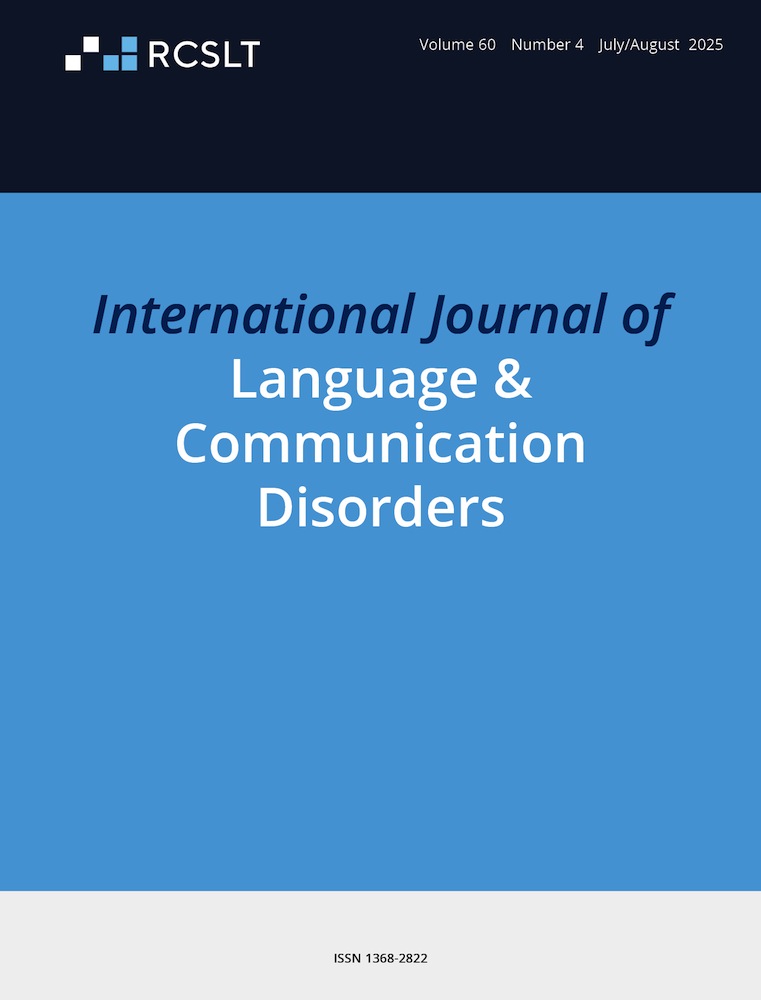The TIC-TAC Method: A Communication Training for a Person With Aphasia and a Caregiver
Funding: The authors received no specific funding for this work.
ABSTRACT
Background
Caregivers of a person with aphasia (PWA) often lack knowledge about aphasia and have difficulty acting as effective conversation partners, feeling excluded and passive. Promoting the interlocutor's proficiency in the ability to support the PWA in a conversation is essential for improving patient–caregiver relationships.
Aims
This observational study aims to test a newly developed method, that is, TIC-TAC (which was derived from the Italian acronym ‘Training di Istruzione alla Comunicazione Tra persona Afasica e Caregiver’ (English transl. ‘Communication Training Education for a Person with Aphasia and a Caregiver’), which was specifically designed to enhance the communicative competence of non-professional caregivers in their interaction with PWAs.
Methods
We enrolled 42 PWA–caregiver dyads. Three dyads dropped out from the study: Thus, the final sample included 39 dyads. The ‘Caregiver Communication Assessment in Aphasia—Checklist’ (ACCA-cl) evaluated the caregiver's communicative competence before and after the administration of the TIC-TAC method. This scale detects the verbal, para-verbal and non-verbal components of communication during the interaction with the patient.
Results
Comparisons between pre- and post-method ACCA-cl scores showed a significant difference between T0 and T1 in the verbal, non-verbal, para-verbal and total scores. Caregivers effectively stored and used information and indications learned during the TIC-TAC training, and showed improvements in all language modalities.
Conclusions
The application of the TIC-TAC method to caregivers of PWAs yielded promising data regarding its impact on the evolution of caregivers’ communicative competence across three representative levels of communication (verbal, para-verbal and non-verbal).
WHAT THIS PAPER ADDS
- Over the years, some training packages have been developed to improve communication between people with aphasia and their conversation partners. However, many of these programs were developed for healthcare professionals or students rather than for non-professional caregivers, limiting their accessibility and real-world applicability. Moreover, existing training methods have often been designed for individuals in the chronic phase of recovery, neglecting the need for communication support in earlier stages of rehabilitation.
- The ‘TIC-TAC’ method, from the Italian acronym ‘Training di Istruzione alla Comunicazione Tra persona Afasica e Caregiver’ (English transl. ‘Communication Training Education between a Person with Aphasia and a Caregiver’), is an educational instrument centred on the caregiver–aphasic patient dyad that is easy to administer in terms of time and procedure, feasible in all rehabilitation services, adaptable to different stages and forms of aphasic disorder and effective to improve the caregiver's communicative competence in daily communication with his/her loved one.
- This study showed the positive effects of a new method tailored to enhance the communicative competence of caregivers of persons with aphasia. The TIC-TAC method is an educational and informative counselling method addressed to caregivers and available in the professional practice of speech therapists working with adult aphasic patients.
Conflicts of Interest
The authors declare no conflicts of interest.
Open Research
Data Availability Statement
The datasets generated and/or analysed during the current study are available from the corresponding author upon reasonable request.




